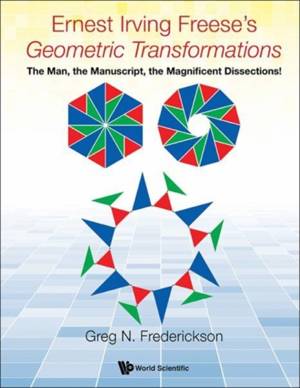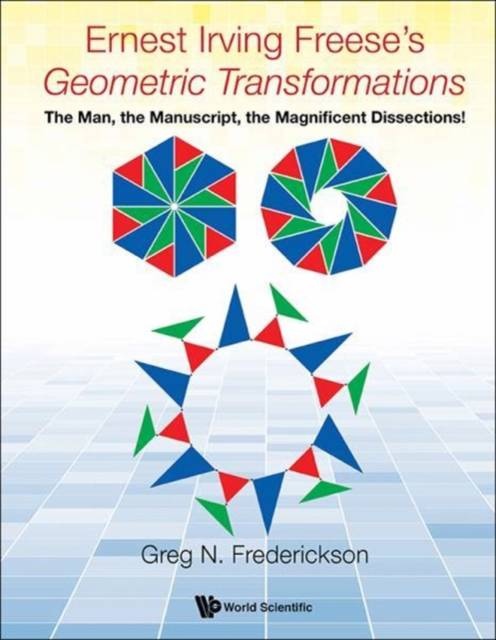
- Retrait gratuit dans votre magasin Club
- 7.000.000 titres dans notre catalogue
- Payer en toute sécurité
- Toujours un magasin près de chez vous
- Retrait gratuit dans votre magasin Club
- 7.000.0000 titres dans notre catalogue
- Payer en toute sécurité
- Toujours un magasin près de chez vous
Ernest Irving Freese's Geometric Transformations: The Man, the Manuscript, the Magnificent Dissections!
Greg N Frederickson
Livre relié | Anglais
149,95 €
+ 299 points
Format
Description
'Everyone interested in geometric dissections, and this kind of puzzles, either mathematically or recreationally will embrace this publication. But also the readers interested in the history and certainly those who became curious about this mystery man and his manuscript, after reading Fredericksonâ (TM)s 2006 book, will be fully satisfied with this respectful reproduction eventually made available for a general public.'European Mathematical Society'Ernest Irving Freese's Geometric Transformations does not just uncover a mathematical gem. It is also a piece of art and a mind-puzzling set of ingenious dissections done by a master of architectural drawings and amateur mathematician. It is a practical book that shows the beauty of dissection and how we can get from a polygon to another by cutting it to pieces and recollect them in some special way. The book is written in a very elegant style, and nicely presented. Freeseâ (TM)s manuscript was photographed and wasnâ (TM)t altered in any way -- this preserved its beauty. Freeseâ (TM)s drawing shows ingenuity and it shows how meticulous he was. For those people who are interested in geometry or in geometric dissections and for those who admire puzzles and recreational mathematics this book is a must.' (See Full Review)MAA ReviewsA geometric dissection is a cutting of a geometric figure (such as a regular polygon, or a star, or a cross) into pieces that we can rearrange to form another geometric figure. The best dissections are beautiful and possess economy (few pieces), symmetry, or hingeability. They are often challenging to discover.Ernest Irving Freese was an architect who lived and worked in Los Angeles until his death in 1957. Shortly before he passed away, he completed a 200-page manuscript on geometric dissection, the first book-length treatment on that subject. Freese included elegant drawings of dissections that were both original and clever. After his death the manuscript lay forgotten in his former house until Greg Frederickson set in motion its recovery in 2003. What a treat that it was rescued!Frederickson's book sketches a history of geometric dissections and a biography of Freese, followed by a refurbished copy of Freese's manuscript interleaved with a commentary that highlights Freese's major contributions as well as singular improvements made by Frederickson and others after Freese.This book introduces Freese and his creations to math puzzle enthusiasts, by way of his engaging manuscript, his wild adventures, and his lovely dissections. Frederickson also includes remarkable designs that improve on Freese's work, and packs this book with nifty illustrations and tidbits that may well leave you speechless!
Spécifications
Parties prenantes
- Auteur(s) :
- Editeur:
Contenu
- Nombre de pages :
- 432
- Langue:
- Anglais
Caractéristiques
- EAN:
- 9789813220461
- Date de parution :
- 17-01-18
- Format:
- Livre relié
- Format numérique:
- Genaaid
- Dimensions :
- 216 mm x 279 mm
- Poids :
- 1315 g

Les avis
Nous publions uniquement les avis qui respectent les conditions requises. Consultez nos conditions pour les avis.






